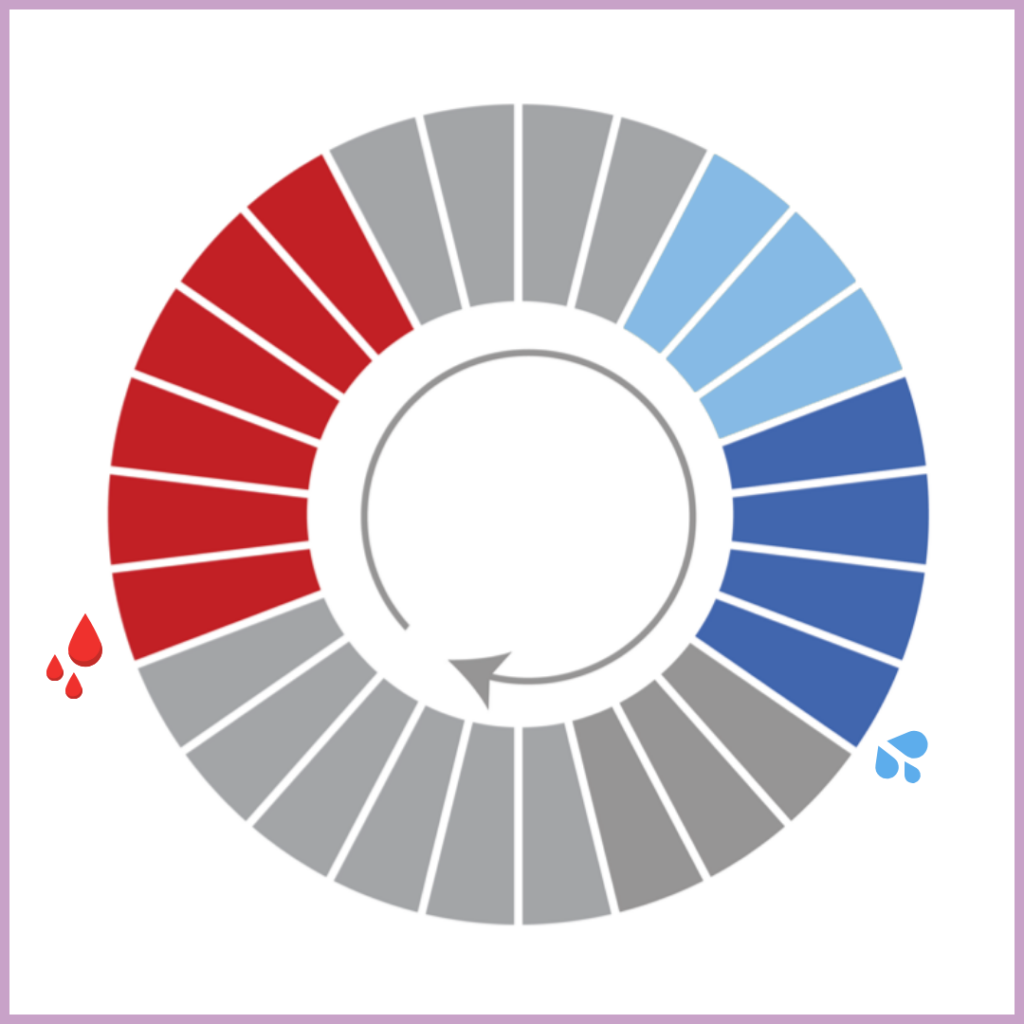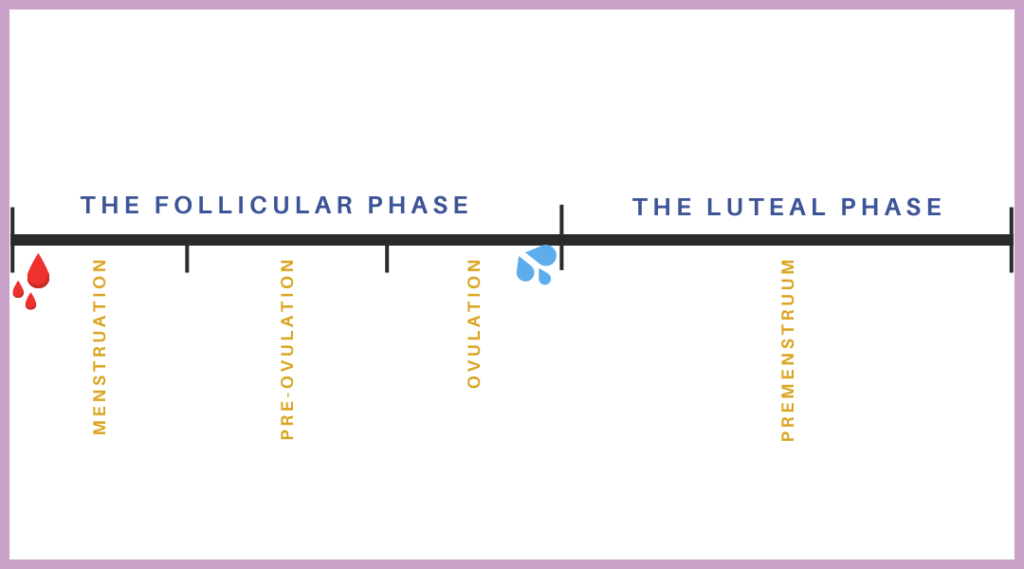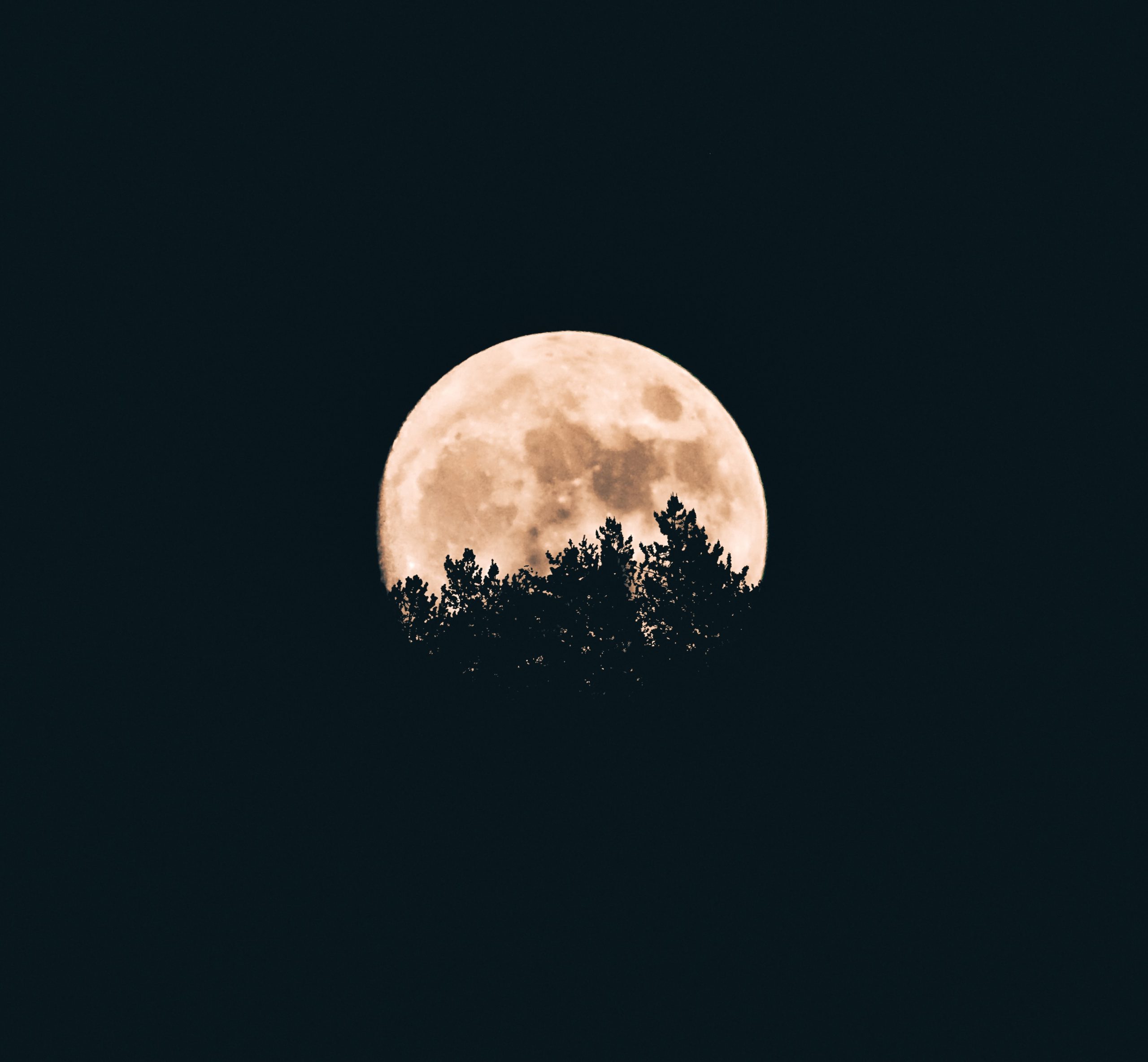What are the phases of our menstrual cycle?
The phases of the menstrual cycle directly correlate with the rhythm of our hormones. The edges of each phase are defined by the shifts we experience as our brain and ovaries communicate.
While ovulation is technically the main event of our menstrual cycles, for the purposes of charting we will begin with menstruation. It’s easier to define cycle day one as the first full day of bleeding versus trying to pinpoint when ovulation has occurred.

The Menstruation Phase
The first phase of our menstrual cycle, this phase begins on the first FULL day of bleeding. Not spotting, but full-flow-bloody-massacre vibes. A healthy bleed lasts between 3-7 days, with at least one day of heavy or medium bleeding (so 3-5 period products used or 25-80mL of blood).
Consistently bleeding less or more could be a sign there’s something off.
This is also a wonderful time to note: your period shouldn’t be painful. Mild discomfort, yes, but you should in theory be able to continue on with your normal day (though most menstrual cycle coaches, myself included, would suggest you rest more). If you’re experiencing moderate to severe cramping, nausea or debilitating pain, then you should talk with your GP. Take your symptom charting and notes on blood quantity with you!
The Pre-ovulation Phase
This phase is the span between menstruation and your fertile window, and can change in length from woman to woman (or menstruator to menstruator). When we see varying cycle lengths, it’s this phase that’s contributing to the variety.
Once bleeding has stopped, there will be relative dryness down below. Our hormones are busy building towards ovulation, but we aren’t experiencing the wetness of fertility yet. For some women, this phase may be a week or so long, while others may just move from menstruation directly into their fertile window.
Women with PCOS will likely have a longer “spring” phase, and may even have a second spring, a term coined by menstrual cycle coach and fertility awareness expert Nathalie Daudet to describe the void-like feeling of an extra long pre-ovulatory phase (think: a couple of months long).
The Ovulation Phase
This phase is pretty easy to notice if you’re in your fertile years. When you wipe after using the toilet, notice the sensation. If you’re near ovulation, you may not even need to wipe; you may notice a moist sensation as you walk, a slippery feeling in your underwear, or even a gush of cervical fluid coming out.
As soon as you note moisture coming from your vagina (unrelated to arousal fluid, when you’re turned on) then you’re in your fertile window or ovulatory phase. As you approach ovulation, you’ll notice the shift from moist cervical mucus to mucus that is more clear, lubricative, or stretchy. The ovulatory phase is over the day after you ovulate. You’ll note this day by the shift back to dryness. No more cervical mucus aiding the potential sperm to the egg, no more fertility, no more ovulatory phase.
The Premenstruum Phase
Last but not least, the premenstruum or the premenstrual phase is the most predictable. Similar to the description of the luteal phase (more on this later), the premenstruum is from the day after ovulation to the day before the start of menstruation.
As you chart and note when you ovulate, you may begin to notice a pattern and your unique length. From there, you’ll be able to predict when your period comes! For me, my period typically arrives two weeks after ovulation.
In terms of sensation during wiping, the premenstruum is defined by dryness. With the drop of estrogen (the wetness-inducing hormone) and rise of progesterone, plus the mucus plug sealing the cervix to protect the uterus and potential egg/fetus, there’s not much… coming out. It’s dry to wipe.
To complicate matters, these four phases can also be spoken of in reference to TWO phases: the follicular phase and the luteal phase.

The Follicular & Luteal Phases
The follicular phase is the first half of the cycle, and the least predictable part. Starting at menstruation and ending at ovulation, this phase can vary in length depending on how successful the body is at ovulating. Women with PCOS may take several attempts to ovulate before an egg is released, or may eventually experience an anovulatory cycle.
The luteal phase, by comparison, is very predictable. Beginning the day after ovulation and ending the day before menstruation, a healthy luteal phase is always between 9-18 days long.
Alright, that was a lot of information. But hopefully you’re feeling more familiar with the terms folks use to refer to their menstrual cycle phases and how follicular and luteal fit into the big picture.
Have questions? Pop them in the comments below!
xx Lauren

[…] tuning into the four phases of your menstrual cycle and noticing the dance your hormones do month-over-month, and then charting your own experience […]
[…] connect with the superpowers and strengths within our natural menstrual cycles. But by tuning into the four phases of your menstrual cycle and noticing the dance your hormones do month-over-month, and then charting your own experience […]
[…] day with the hope of discovering monthly patterns in your behaviour and emotions, as dictated by the phases of your menstrual cycle. (If you don’t have an active cycle, stick with […]